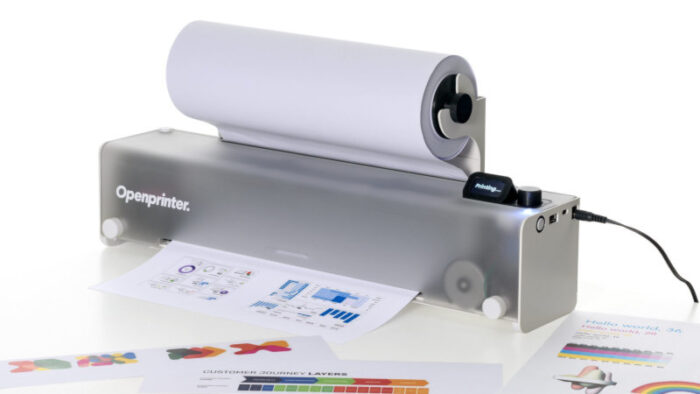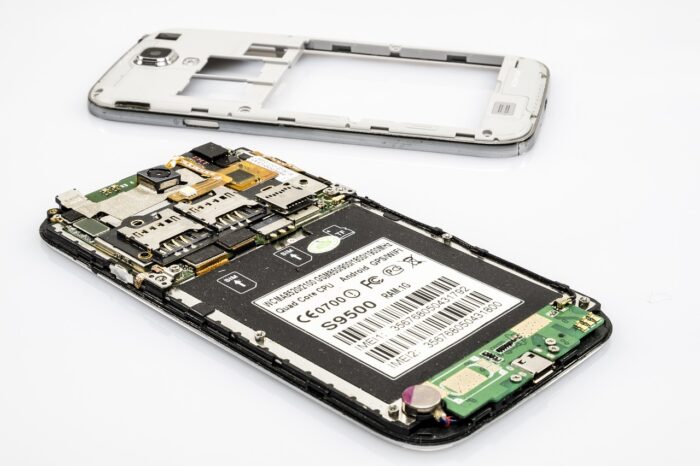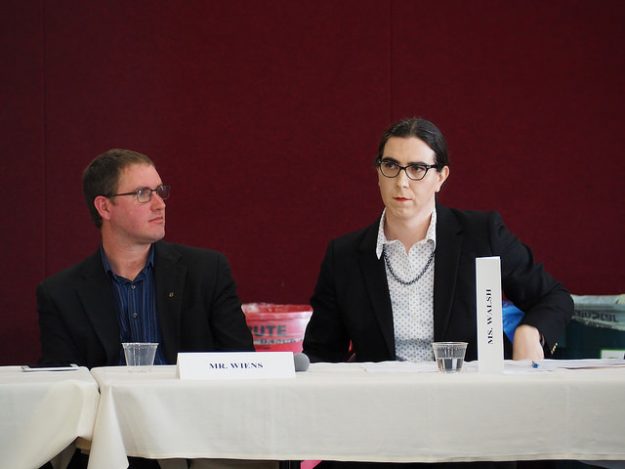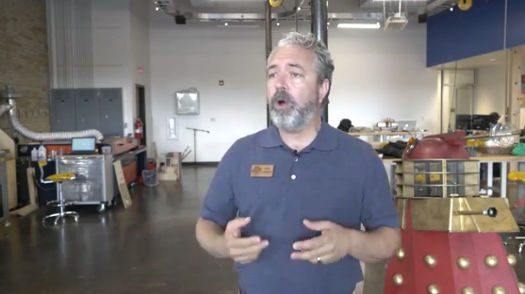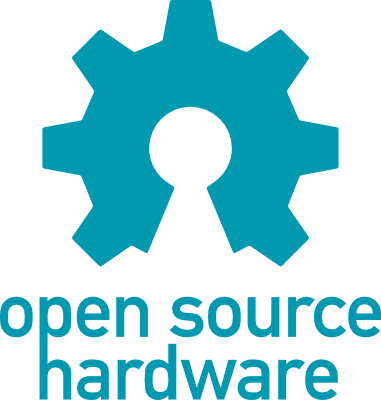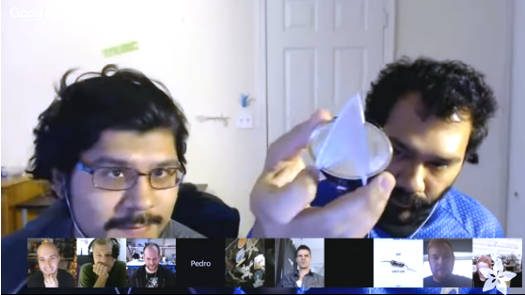Tired of paying the equivalent of $10,000 per gallon for inkjet cartridges, and throwing away printers that aren't fixable? According to the Open Printer project, a solution is on the way.
Posts published in “Maker Movement”
Oregon's "right to repair" bill, which now only needs the governor's signature before it becomes law, has teeth not found in similar legislation from other states.
The Electronic Frontiers Foundation is attempting to have some DMCA provisions declared unconstitutional by the courts on First Amendment grounds.
Not so long ago, when we mentioned “open source,” we were nearly always talking about software. These days, open source can refer to almost anything — like this affordable DIY robot from “Cheap Arm Project.”
The Screening Room
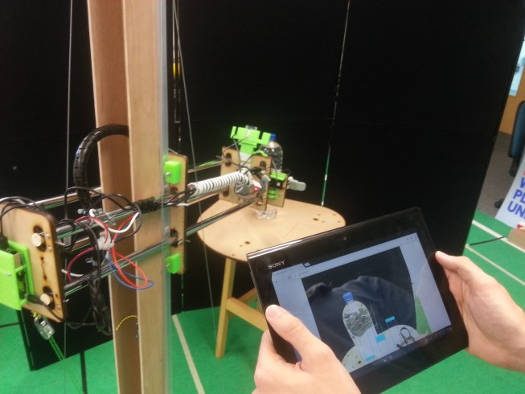
When someone creates a new GitHub repository for a project that could help people around the world extend the reach of their limbs, I get a lump in my throat. The YouTube description of this open source hardware/software project describes the project in much better ways than I ever could.
“The video shows first design of teleoperated mobile robotic manipulator produced in the Cheap Arm Project (CHAP). It costs less than $2,000, uses easily available parts and can be assembled by anybody with basic technical skills. The manipulator can reach objects from floor-level up to shelves at a height of 170cm using a new low-cost arm design. Teleoperation is done using a tablet, smartphone or browser. The cost could be further reduced by using different servomotors. The design and assembly instructions are made available on the open-source repository GitHub, with the hope that the community will build and improve the design.
For the past 10 years, Phil has been working at a public library in the Washington D.C.-area, helping youth and adults use the 28 public Linux stations the library offers seven days a week. He also writes for MAKE magazine, Opensource.com and TechSoup Libraries. Suggest videos by contacting Phil on Twitter or at pshapiro@his.com.
Open source driving a single wheel. Now, that’s a balancing act. Look at this open source unicycle motor.
The Screening Room
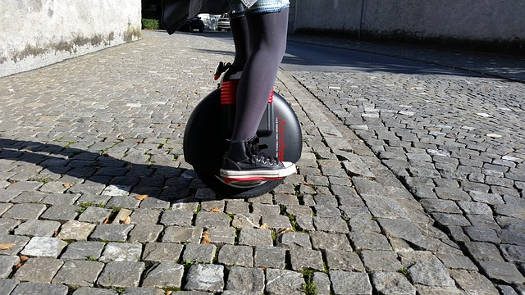
My open source buddy Kevin Cole, who lives in Washington DC and shows up to just about every tech event in the DC-area, loves riding a unicycle. So when I spotted this new YouTube video about an open source unicycle motor, a broad smile crossed my face.
For the past 10 years, Phil has been working at a public library in the Washington D.C.-area, helping youth and adults use the 28 public Linux stations the library offers seven days a week. He also writes for MAKE magazine, Opensource.com and TechSoup Libraries. Suggest videos by contacting Phil on Twitter or at pshapiro@his.com.
It occurs to us that the iCub might be the perfect companion for an only child. Probably cheaper in the long run than a little brother or sister, and it can be turned off at night.
The Screening Room
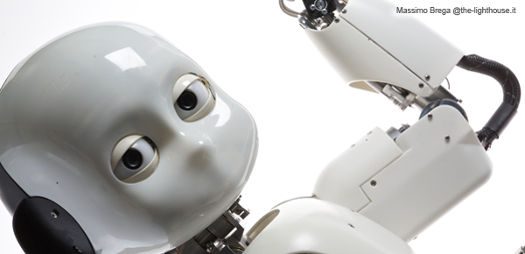
Apparently, the iCub open-source robot can be taught anything a 4-year-old can learn. I wonder if it can be taught to whine annoyingly, be unkind to its little sister, refuse to go to bed at night, wake up its parents too early in the morning, etc.
For the past 10 years, Phil has been working at a public library in the Washington D.C.-area, helping youth and adults use the 28 public Linux stations the library offers seven days a week. He also writes for MAKE magazine, Opensource.com and TechSoup Libraries. Suggest videos by contacting Phil on Twitter or at pshapiro@his.com.
People involved in the maker movement are coming up with all sorts ideas to both help the planet and improves people’s lives — such as this idea for an open source village.
The Screening Room

If you’re looking for people thinking outside the box, open source people spend most of their day thinking outside the box. Witness Alex Cureton-Griffiths talking about his ideas, at MakerBay Central in Hong Kong, for an open source village in China. Yes, the text in his LibreOffice presentation appears reversed, but that’s a feature, not a bug. (Give me a few weeks to figure out why.)
For the past 10 years, Phil has been working at a public library in the Washington D.C.-area, helping youth and adults use the 28 public Linux stations the library offers seven days a week. He also writes for MAKE magazine, Opensource.com and TechSoup Libraries. Suggest videos by contacting Phil on Twitter or at pshapiro@his.com.
When you think about it, “making” is just a more down-to-earth and less abstract version of coding, with results you touch and feel instead of…
Is it “organic,” or just merely “natural?” Is it really “open source hardware,” or merely hardware with a degree of openess? David Jones explains the problem in identifying which is which and who is whom.
The Video Screening Room
David L. Jones, an electronics design engineer based in Sydney Australia, explains his pragmatic solution to the use of the open source hardware logo — inspired by the varying gradations of the Creative Commons licenses.
For the past 10 years, Phil has been working at a public library in the Washington D.C.-area, helping youth and adults use the 28 public Linux stations the library offers seven days a week. He also writes for MAKE magazine, Opensource.com and TechSoup Libraries. Suggest videos by contacting Phil on Twitter or at pshapiro@his.com.
Wow! This live Hangout show looks a lot like a DIY version of one of the morning shows on over-the-air TV — and if there’s any doubt that the maker movement thrives on open source, the first guest’s project is all about Python and Arduino. Be sure to check out the cool Star Trek combadge. Beam us up, Mr. Shapiro!
The Video Screening Room
Lady Ada and Philip Torrone are both legendary makers and exemplary sharers of hacks and tips. Their weekly “Show-And-Tell” Google Hangout is always fascinating. These Hangouts are archived to YouTube.
For the past 10 years, Phil has been working at a public library in the Washington D.C.-area, helping youth and adults use the 28 public Linux stations the library offers seven days a week. He also writes for MAKE magazine, Opensource.com and TechSoup Libraries. Suggest videos by contacting Phil on Twitter or at pshapiro@his.com.

